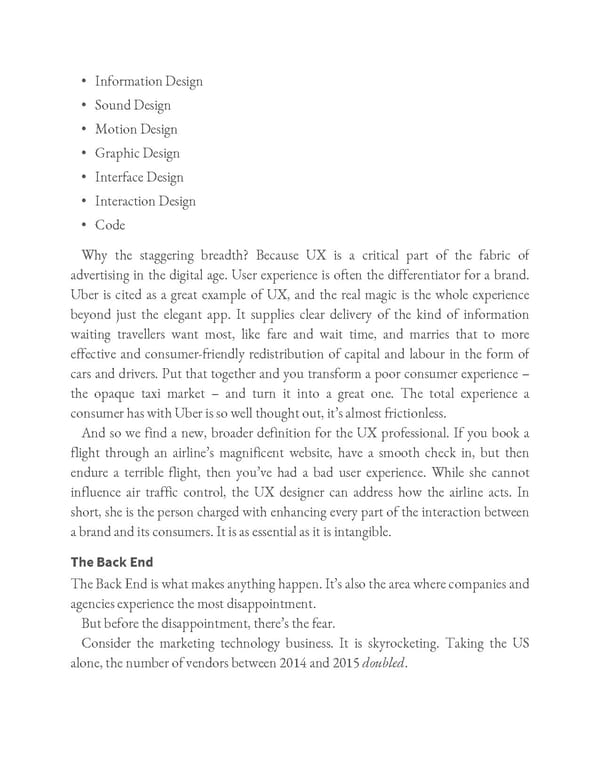• Information Design • Sound Design • Motion Design • Graphic Design • Interface Design • Interaction Design • Code Why the staggering breadth? Because UX is a critical part of the fabric of advertising in the digital age. User experience is often the differentiator for a brand. Uber is cited as a great example of UX, and the real magic is the whole experience beyond just the elegant app. It supplies clear delivery of the kind of information waiting travellers want most, like fare and wait time, and marries that to more effective and consumer-friendly redistribution of capital and labour in the form of cars and drivers. Put that together and you transform a poor consumer experience – the opaque taxi market – and turn it into a great one. The total experience a consumer has with Uber is so well thought out, it’s almost frictionless. And so we find a new, broader definition for the UX professional. If you book a flight through an airline’s magnificent website, have a smooth check in, but then endure a terrible flight, then you’ve had a bad user experience. While she cannot influence air traffic control, the UX designer can address how the airline acts. In short, she is the person charged with enhancing every part of the interaction between a brand and its consumers. It is as essential as it is intangible. The Back End The Back End is what makes anything happen. It’s also the area where companies and agencies experience the most disappointment. But before the disappointment, there’s the fear. Consider the marketing technology business. It is skyrocketing. Taking the US alone, the number of vendors between 2014 and 2015 doubled.
 Ogilvy on Advertising in the Digital Age Page 264 Page 266
Ogilvy on Advertising in the Digital Age Page 264 Page 266